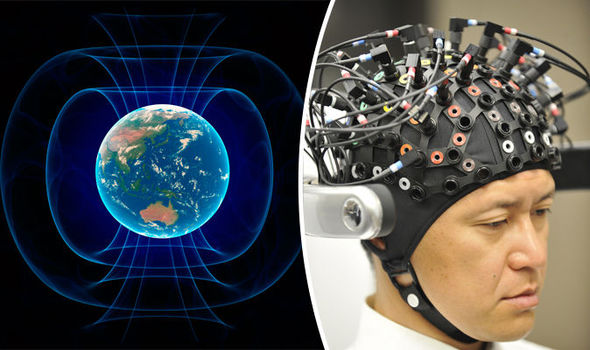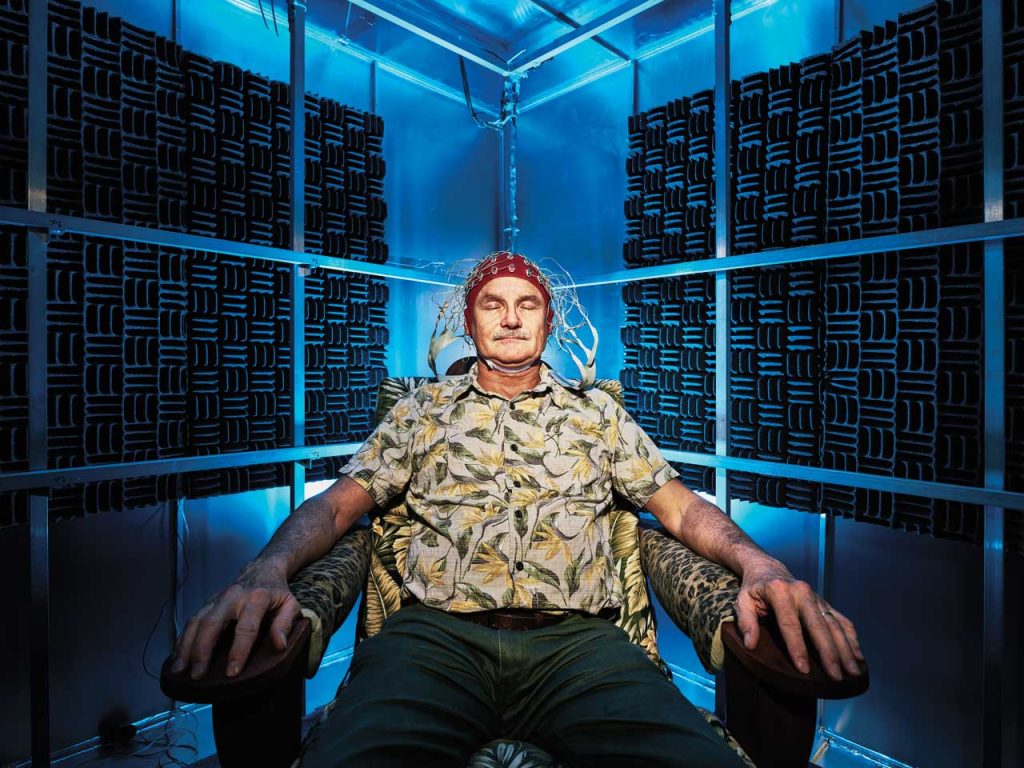Table of Contents
Human magnetoreception, the ability to sense magnetic fields, is a fascinating and relatively recent area of scientific study. Although traditionally associated with animals such as migratory birds and sea turtles, there is growing evidence suggesting that humans may also possess some degree of magnetoreceptive capability. This article explores the science behind human magnetoreception, examining its potential mechanisms, evidence, and implications for our understanding of human sensory perception.

1. Understanding Magnetoreception
Magnetoreception is the ability to detect magnetic fields and use them for orientation and navigation. In the animal kingdom, this ability is well-documented. Species like birds, bees, and sea turtles are known to use the Earth&8217;s magnetic field for migration, foraging, and navigation. For a long time, scientists believed that magnetoreception was a trait unique to these animals, but recent research suggests that humans might also have some form of this ability
2. Evidence for Human Magnetoreception
Although human magnetoreception is not yet fully understood, several lines of evidence suggest that it might exist.
- Behavioral Experiments: Research has shown that humans can detect magnetic fields under certain conditions. For example, studies involving magnetic field manipulation have observed changes in human behavior. In one experiment, subjects exposed to altered magnetic fields demonstrated changes in their sense of direction and spatial awareness, suggesting a possible magnetoreceptive response.
- Physiological Evidence: Some studies have investigated physiological responses to magnetic fields. For instance, researchers have examined brain activity in response to magnetic field changes using electroencephalography (EEG) and functional magnetic resonance imaging (fMRI). Certain studies have found variations in brain wave patterns and neural activity when individuals are exposed to magnetic fields, which may indicate a magnetoreceptive mechanism.
- Magnetite Particles: Evidence for magnetoreception in humans is also supported by the presence of magnetite, a magnetic mineral, in the human body. Magnetite particles have been found in human tissues, such as the brain and nasal cavity. These particles are thought to be involved in magnetic field detection, similar to how magnetite functions in animals.
3. Potential Mechanisms of Magnetoreception
Several hypotheses have been proposed to explain how magnetoreception might work in humans.
- Magnetite-Based Mechanism: One of the leading hypotheses suggests that magnetite particles in the human body could act as biological magnets. These particles might interact with the Earth&8217;s magnetic field, influencing neural activity and providing a sense of direction. This mechanism is similar to how magnetite functions in some animals.
- Cryptochrome Theory: Another hypothesis involves cryptochromes, a class of proteins found in the retina and other tissues. Cryptochromes are known to be involved in circadian rhythms and are sensitive to blue light. Some researchers believe that cryptochromes might also play a role in magnetoreception by responding to changes in the magnetic field. This theory is based on the idea that cryptochromes could act as magnetoreceptors, similar to their role in other animals.
- Electromagnetic Field Interference: Some scientists suggest that changes in the electromagnetic field could affect brain function and sensory perception. According to this hypothesis, magnetic fields might interfere with or modulate neural activity, influencing spatial awareness and orientation. This mechanism could be linked to the observed physiological responses to magnetic field exposure.

4. Applications and Implications
Understanding human magnetoreception has several potential applications and implications.
- Navigation and Orientation: If humans can indeed sense magnetic fields, it could have implications for navigation and spatial orientation. Enhanced understanding of magnetoreception might lead to new ways of improving navigation systems or developing tools to assist people with orientation difficulties.
- Medical and Therapeutic Applications: Research into magnetoreception could also have medical applications. For example, understanding how magnetic fields affect brain function could lead to new treatments for neurological disorders or improve existing therapeutic techniques, such as magnetic stimulation therapies.
- Environmental Impact and Safety: Knowledge of how magnetic fields influence human perception could inform safety guidelines for exposure to electromagnetic fields in various environments. This could be relevant for occupations involving high levels of electromagnetic radiation or for developing safety standards in public spaces.
5. Challenges and Controversies
Despite the intriguing possibilities, there are several challenges and controversies surrounding the study of human magnetoreception.
- Lack of Conclusive Evidence: While there is suggestive evidence, definitive proof of human magnetoreception remains elusive. Many studies have produced mixed results or have not been replicated consistently. The lack of conclusive evidence makes it difficult to establish a clear understanding of the mechanisms and capabilities of human magnetoreception.
- Interference from Other Factors: Experimental studies on magnetoreception often face challenges in controlling for other factors that might influence results, such as placebo effects, environmental conditions, and individual differences. These factors can complicate the interpretation of findings and the establishment of reliable conclusions.
- Ethical Considerations: Research into magnetoreception involves studying the effects of magnetic fields on human subjects, which raises ethical considerations. Ensuring the safety and well-being of participants, as well as addressing potential risks associated with exposure to magnetic fields, is essential for conducting ethical research.
6. Future Directions in Research
The field of human magnetoreception is still evolving, and future research will likely explore new avenues and methodologies.
- Advanced Technologies: The development of advanced technologies, such as more sensitive magnetic field sensors and improved imaging techniques, could enhance our ability to study magnetoreception. These technologies may provide more precise measurements and better insights into the underlying mechanisms.
- Interdisciplinary Approaches: Combining insights from various disciplines, such as neuroscience, psychology, and biophysics, could lead to a more comprehensive understanding of human magnetoreception. Interdisciplinary approaches may help unravel the complexities of magnetoreceptive mechanisms and their implications.
- Long-Term Studies: Conducting long-term studies and replication research is crucial for validating findings and establishing reliable evidence for human magnetoreception. Long-term research can provide a more robust understanding of the phenomenon and its potential effects on human perception and behavior.

Conclusion
The science of human magnetoreception represents an intriguing frontier in our understanding of sensory perception. While evidence suggests that humans may possess some degree of magnetoreceptive capability, definitive proof and comprehensive explanations remain elusive. As research progresses, exploring the mechanisms and implications of magnetoreception will continue to reveal new insights into the complexities of human perception and sensory systems. The potential applications and challenges associated with magnetoreception highlight the importance of ongoing investigation and interdisciplinary collaboration in this fascinating field.
